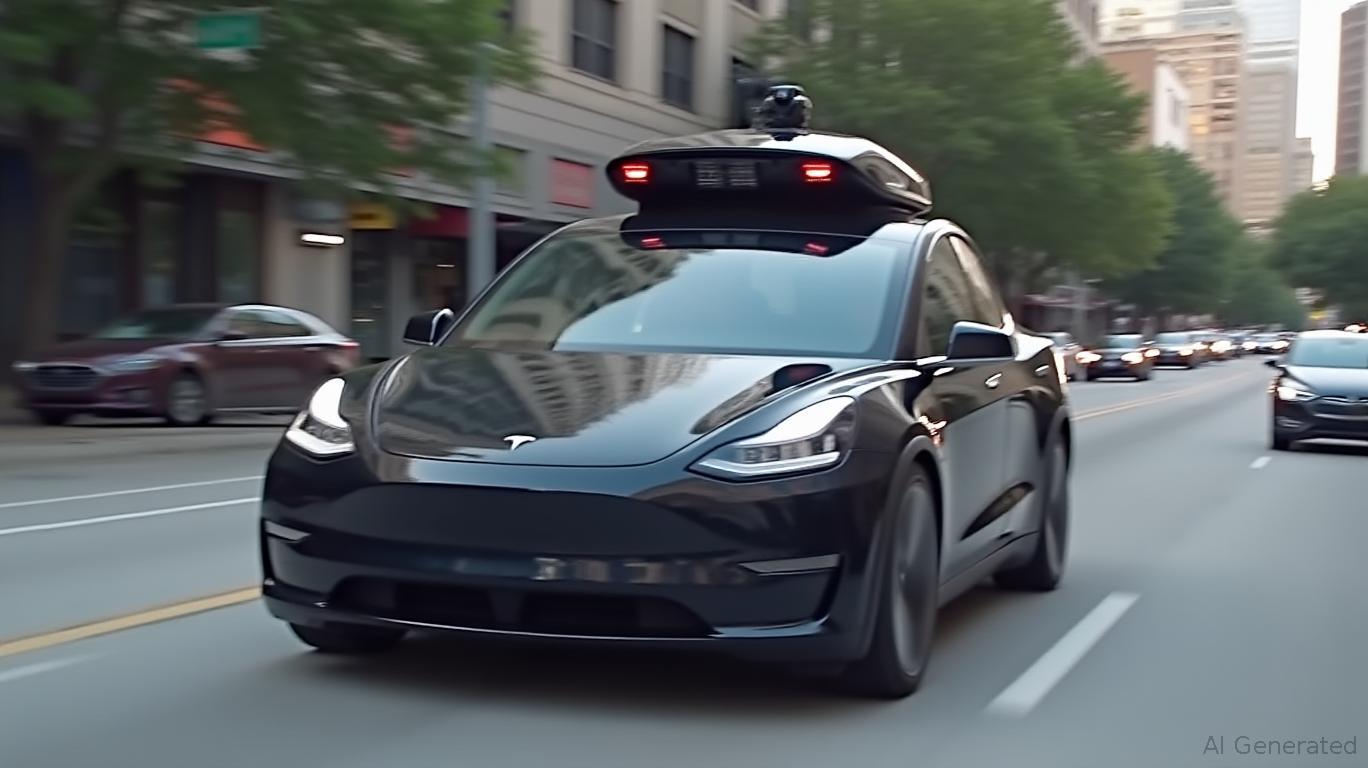Tesla's Autonomous Ambition: Can Robotaxis Drive the Next Bull Run?
In the heart of Texas, a new chapter in automotive history is about to unfold. On June 12, 2025,
will launch its Robotaxi service in Austin—a bold step toward transforming the company from an electric vehicle (EV) pioneer into a leader in autonomous mobility. This move has far-reaching implications for the $1.7 trillion autonomous vehicle (AV) sector, reshaping competitive dynamics and investor sentiment. Let's dissect Tesla's investment thesis and its impact on the market.
The Investment Thesis: Tesla's Strategic Edge
Tesla's Robotaxi launch hinges on three pillars: cost leadership, data dominance, and execution speed.
Cost Leadership: Undercutting the Competition
Tesla's camera-only FSD v13 system costs just $400 per vehicle, a fraction of rivals like Waymo's lidar-based systems ($9,300 per vehicle). This cost advantage allows Tesla to scale faster and offer rides at $0.20 per mile by 2026—potentially undercutting competitors like Cruise's Origin (estimated at $0.35–$0.50/mile).
The stock has surged 22% in 2025 on Robotaxi hype, despite Q1 2025 revenue declines. Investors are betting on Tesla's ability to monetize its software through FSD upgrades and revenue-sharing with its fleet.
Data Dominance: The AI Moat
Tesla's fleet of 2.5 million vehicles generates vast real-world driving data, fueling its AI-driven FSD system. This “end-to-end learning” creates a network effect that rivals like Waymo, reliant on smaller test fleets, struggle to match. By converting existing Teslas into Robotaxis via over-the-air updates, Tesla can deploy “hundreds of thousands” of autonomous vehicles by 2026—though analysts like Goldman Sachs doubt this target, projecting only 2,500 robotaxis by 2027.
Execution Speed: Ahead of Schedule?
Tesla's June 12 launch is a month ahead of initial expectations. Testing in Austin has shown Model Ys navigating public roads without a driver in the front seat. However, challenges loom: FSD v13's inconsistent performance (erratic lane changes, delayed traffic light recognition) and regulatory hurdles in states like California could delay expansion.
Competitive Landscape: Tesla vs. the Titans
Tesla's Robotaxi ambitions face fierce competition from established players:
Waymo (#1 in Autonomous Vehicles):
Waymo's 2.5-year head start (10 million+ driverless rides) and partnerships with Uber and Jaguar provide operational depth. But Tesla's cost model and Musk's aggressive timeline risk eroding Waymo's lead. Investors worry Waymo's corporate bloat could mirror Alphabet's missteps in GenAI.Cruise (GM subsidiary):
Lags in deployment timelines, with no new plans beyond existing San Francisco operations. Its lidar-heavy approach faces pressure from Tesla's cheaper camera system.Nuro & Kodiak (Trucking Focus):
Nuro's Japan expansion and Kodiak's $2.5B SPAC valuation highlight niche opportunities in delivery and logistics. Tesla's Cybercab (steering-wheel-free robotaxi, 2026 launch) may challenge them indirectly.
Tesla's $800B market cap dwarfs Waymo's standalone valuation (estimated ~$30B), but Waymo's operational experience remains a key advantage.
Valuation: Overbought or Undervalued?
Tesla's stock trades at a forward P/E of 134x—a staggering premium compared to its five-year average of 247.86. This reflects investor optimism about its $200B autonomous mobility opportunity. However, risks loom:
- Bear Case Risks:
- Regulatory setbacks (e.g., NHTSA's $400M probe into FSD safety).
- Margin pressures from ASP declines ($3,700 YoY drop) and geopolitical risks (tariffs on Chinese components).
Musk's distractions (SpaceX, Neuralink) could slow FSD's critical unsupervised mode rollout.
Bull Case Payoffs:
- A successful Robotaxi launch could validate Tesla's SaaS-like model, with FSD upgrades and fleet revenue driving $15k+ per vehicle in recurring revenue.
- Cybercab's 2026 launch could dominate urban mobility, leveraging Tesla's EV scale.
Investment Strategy: High Risk, High Reward
Aggressive Investors (5% portfolio allocation):
Bet on Tesla's long-term vision. The stock could hit $1,000 by 2026 if Robotaxi milestones are met. However, expect volatility—a 40% correction is plausible if FSD faces delays.Conservative Investors: Wait for a Pullback
Target entry at $250–$300 (a 30% drop from June 2025 highs) to mitigate overvaluation risks. Monitor regulatory approvals and Cybercab production timelines.Hedging Against Competitors:
Consider Waymo's parent Alphabet (for Waymo's operational moat) or Kodiak (autonomous trucking) as diversification plays.
Conclusion: A New Mobility Era Beckons
Tesla's Robotaxi launch is a defining moment for autonomous mobility. While its cost leadership and data moat position it for leadership, execution risks and regulatory hurdles remain formidable. For investors, the decision hinges on whether Musk can deliver the “autonomous future” he's promised—or if the hype will crumble under real-world challenges. The stock is a high-stakes bet: a potential $1,000+ reward for believers, or a $200–$300 reckoning for skeptics. Proceed with eyes wide open.

Comments
No comments yet